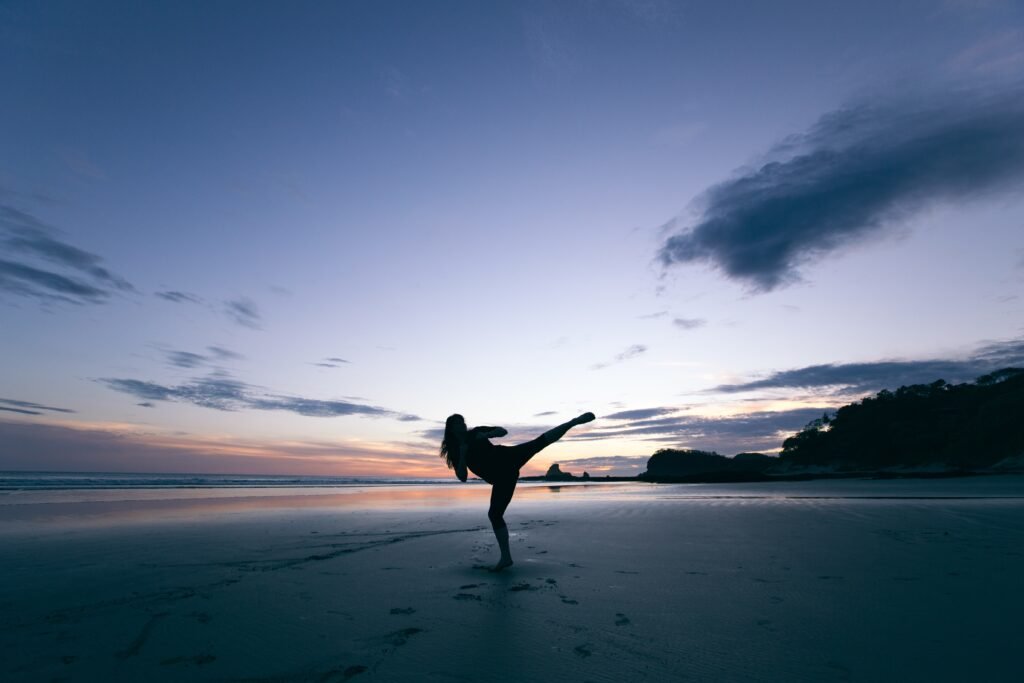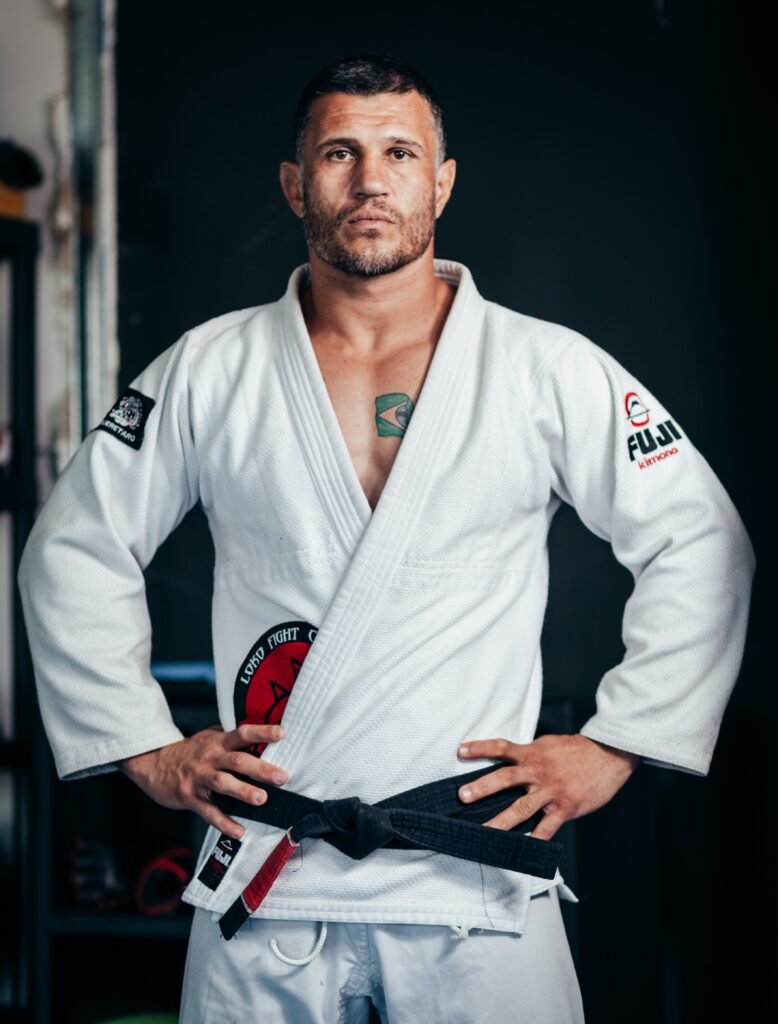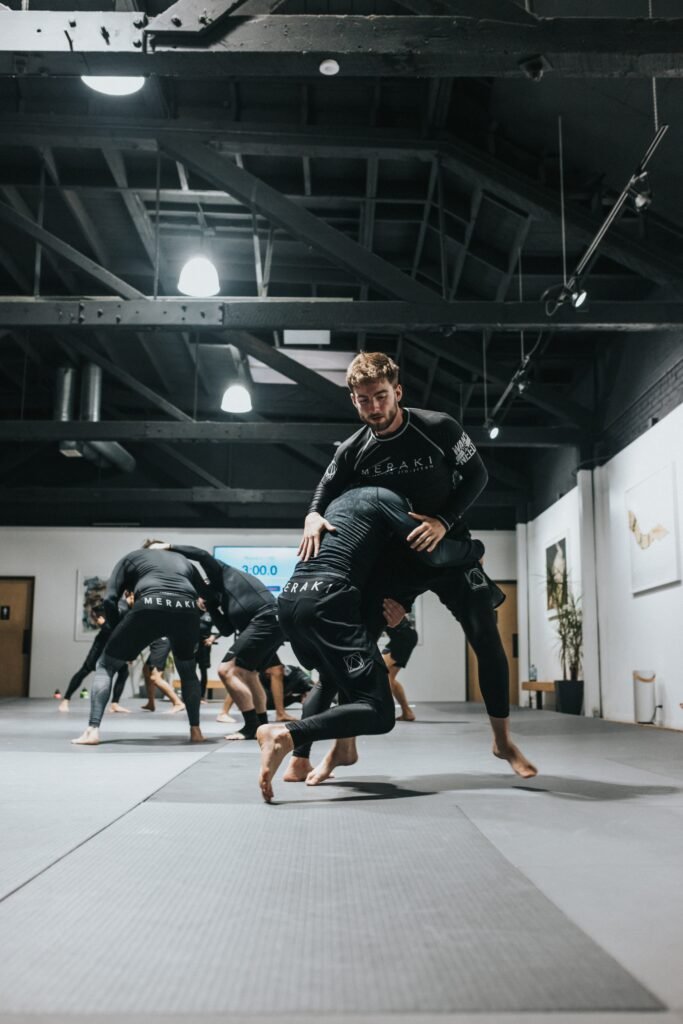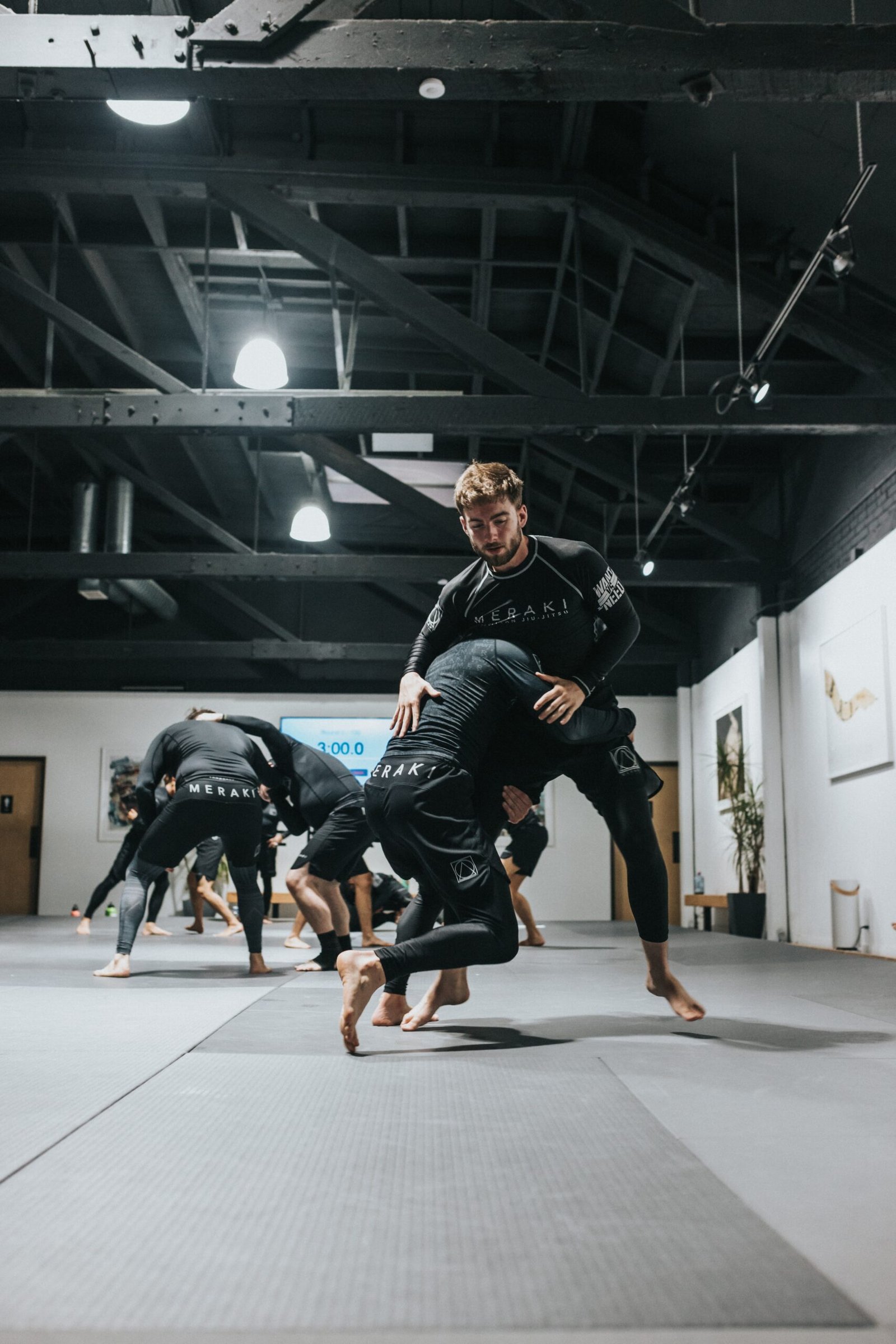If you've ever wondered which martial art would be the best fit for you, look no further. At USHRK Kumdo & Kendo, we offer modern Korean style martial arts that encompass a wide range of benefits. Not only will you develop your physical strength and enhance your self-defense skills, but you'll also experience a boost in mental fortitude and self-confidence. With our expert instructors and welcoming community, you can begin your martial arts journey today and discover the perfect discipline that suits your needs. Visit us now to find the best martial arts classes near you.

1. Karate
Origin and Philosophy
Karate, which originated in Okinawa, Japan, is a martial art that focuses on striking techniques using punches, kicks, and knee strikes. The word "karate" translates to "empty hand," emphasizing the use of the body as a weapon. The philosophy of Karate promotes self-discipline, respect, and perseverance. Practitioners strive to cultivate a strong spirit, both physically and mentally, through continuous training.
Techniques and Training
In Karate, techniques are categorized into three main types: strikes, kicks, and blocks. Strikes involve punches and open-handed strikes, while kicks include various leg techniques such as front kicks and roundhouse kicks. Blocks are used to defend against incoming attacks. Training in Karate typically involves practicing katas, which are choreographed patterns of movements, and kumite, which is sparring with a partner. Through consistent practice, students develop precision, timing, and control in executing their techniques.
Benefits
Practicing Karate offers numerous benefits. Physically, it improves cardiovascular fitness, strength, flexibility, and coordination. Regular training also enhances self-confidence and self-esteem by setting and achieving goals. The mental discipline cultivated in Karate helps practitioners develop focus, concentration, and the ability to remain calm under pressure. Additionally, Karate provides practical self-defense skills that can be utilized in real-life situations, increasing personal safety and security.
2. Taekwondo
History and Principles
Taekwondo, a Korean martial art, traces its roots back over 2,000 years. It was developed as a means of self-defense and serves as an embodiment of Korean culture. Taekwondo's principles are centered around the five tenets: courtesy, integrity, perseverance, self-control, and indomitable spirit. Practitioners strive to apply these principles in both their training and daily lives.
Forms and Techniques
A significant aspect of Taekwondo is practicing poomsae, which are predetermined sequences of movements. Poomsae trains the body to execute techniques with precision and fluidity, promoting balance and control. Taekwondo also focuses on powerful kicks, such as spinning kicks and jumping kicks, which require flexibility and agility. Other techniques, including punches and blocks, are incorporated to create a well-rounded skill set.
Physical and Mental Benefits
Participating in Taekwondo offers numerous physical benefits. The rigorous training improves cardiovascular fitness, stamina, and overall strength. The art's emphasis on kicks also enhances flexibility and leg strength. Mentally, Taekwondo fosters discipline, focus, self-esteem, and mental resilience. It provides a platform for personal growth, teaching practitioners to set goals and overcome challenges. Furthermore, Taekwondo provides invaluable self-defense skills, giving individuals the confidence to protect themselves if required.
3. Judo
Origins and Principles
Judo, originating in Japan, was founded by Jigoro Kano in the late 19th century. Kano devised Judo as a means of self-defense that focused on utilizing an opponent's strength against them. Its principles revolve around efficient and effective use of one's energy, emphasizing balance, leverage, and timing. Kano's vision was to develop not only skilled fighters but also individuals who embody respect, humility, and mutual benefit.
Throws and Grappling Techniques
Judo primarily consists of throws, which involve using an opponent's momentum and balance to bring them to the ground. By understanding leverage and proper execution of techniques, individuals can overcome a larger and stronger opponent. Judo also includes groundwork, known as ne-waza, which involves pins, joint locks, and chokes to immobilize or submit an opponent.
Self-Defense and Fitness
Judo's focus on practical self-defense techniques makes it a valuable martial art for personal protection. The art teaches individuals how to defend themselves while avoiding harm. Judo training significantly improves physical fitness, strength, and flexibility. Practicing throws and grappling techniques provides a full-body workout, enhancing muscular endurance and coordination. Moreover, Judo develops mental discipline, problem-solving skills, and the ability to adapt to various situations, making it a well-rounded martial art.
4. Brazilian Jiu-Jitsu
History and Basics
Brazilian Jiu-Jitsu (BJJ) is a martial art that evolved from Japanese Jiu-Jitsu and was further developed in Brazil by the Gracie family. It focuses on ground fighting techniques and submissions, utilizing joint locks and chokes to immobilize or submit opponents. The art emphasizes technique and leverage, enabling smaller individuals to overcome larger and stronger opponents.
Ground Fighting and Submissions
BJJ places great importance on ground fighting skills. Practitioners learn how to use positioning, control, and leverage to neutralize an opponent's strength and apply submissions. Common techniques include arm locks, leg locks, and chokes. Through consistent training, individuals acquire the ability to defend and submit adversaries on the ground effectively.
Competitive and Self-Defense Applications
BJJ is widely practiced both as a competitive sport and as a self-defense system. In sport BJJ, practitioners compete in tournaments under specific rules and weight classes. The art has gained recognition through the success of Brazilian Jiu-Jitsu practitioners in mixed martial arts competitions. BJJ's practicality in real-life self-defense situations makes it a valuable martial art for personal protection. Its ground fighting focus is especially advantageous when dealing with confrontations that end up on the ground.

5. Muay Thai
History and Culture
Originating in Thailand, Muay Thai is a martial art and combat sport with a rich history and cultural significance. It incorporates striking techniques using various parts of the body, including fists, elbows, knees, and shins. Muay Thai's origins trace back to ancient battlefield tactics, where warriors utilized these techniques to defend themselves and their territories.
Striking Techniques and Clinching
Muay Thai is known for its powerful strikes and effective clinching techniques. Practitioners develop proficiency in punching, kicking, and knee and elbow strikes through intense training. The clinch, a unique aspect of Muay Thai, involves gripping and controlling an opponent in close quarters to deliver devastating knee strikes or sweeps. The art's emphasis on conditioning prepares individuals for the physical demands of attacking and defending at close range.
Physical Conditioning and Mental Focus
Muay Thai training is renowned for its rigorous physical conditioning routines. It improves cardiovascular endurance, strength, and overall fitness. Training camps in Thailand, known as Muay Thai gyms, provide an immersive environment where practitioners can focus solely on their training. Mentally, Muay Thai cultivates discipline, resilience, and mental fortitude due to its intense and demanding nature. It also fosters discipline, self-confidence, and respect for oneself and others.
6. Boxing
History and Rules
Boxing, also known as "the sweet science," has a rich history dating back thousands of years. It gained popularity as a regulated sport in the late 19th century. In boxing, fighters utilize punches alone to score points and defeat opponents. The sport follows strict rules, including weight divisions, rounds, and prohibited techniques such as hitting below the belt.
Punching Techniques and Defense
Boxing is primarily centered around different punching techniques. These include jabs, crosses, hooks, and uppercuts, which require proper technique and body mechanics to generate power. Effective footwork and head movement are essential in combination with punches to evade incoming strikes and counter effectively. Boxing also emphasizes defensive skills, teaching individuals how to block, slip, and parry punches.
Fitness and Stress Relief
Boxing is renowned for its ability to improve overall fitness. Training sessions involve high-intensity workouts that target cardiovascular endurance, strength, and muscular endurance. Boxing training also provides a great stress relief outlet, allowing individuals to release tension and frustration in a controlled environment. The discipline and mental focus developed in boxing translate into daily life, contributing to personal well-being and resilience.

7. Kung Fu
Traditional Chinese Martial Art
Kung Fu, translated as "skill" or "achievement through effort," encompasses a diverse range of Chinese martial arts styles and techniques. It originated in ancient China and has a history spanning thousands of years. Kung Fu is renowned for its dynamic and fluid movements, emphasizing both physical and mental development.
Forms and Techniques
Kung Fu consists of various forms, or routines, that are performed in a specified sequence. Forms are choreographed sets of movements that serve as training tools for developing techniques, balance, flexibility, and strength. Kung Fu techniques encompass a wide range, including striking, kicking, grappling, joint locks, and throws. The art also incorporates the use of traditional Chinese weapons.
Internal and External Styles
Kung Fu can be categorized into two main branches: internal and external styles. External styles, such as Shaolin Kung Fu, focus on physical strength, speed, and agility. Internal styles, like Tai Chi, emphasize cultivating internal energy, or "qi," and focusing on relaxation and balance. Both branches offer unique benefits, with external styles emphasizing physical prowess and internal styles enhancing mental clarity and inner strength.
8. Krav Maga
Israeli Self-Defense System
Krav Maga, developed in Israel, is a self-defense system known for its practical and efficient techniques. It was originally created for the Israeli military and focuses on real-life situations and self-preservation. Krav Maga teaches individuals how to defend themselves against various types of armed and unarmed attacks while emphasizing neutralizing threats as quickly and effectively as possible.
Realistic Training and Techniques
Krav Maga training simulates real-life scenarios to prepare individuals for potential threats. Techniques are designed to be simple, instinctive, and easy to learn, making them accessible for people of all ages and fitness levels. Krav Maga also emphasizes quick reflexes, explosive movements, and targeting vulnerable areas to disable attackers effectively.
Effective for Close Combat
Krav Maga's emphasis on close combat and self-defense techniques makes it highly effective in real-world situations. Practitioners learn how to quickly assess and respond to threats, utilizing a combination of strikes, kicks, and targeted attacks. The system's focus on situational awareness, aggression, and decisiveness equips individuals with the skills and mindset to protect themselves and others.
9. Capoeira
Brazilian Martial Art and Dance
Capoeira combines elements of martial arts, acrobatics, and dance, originating in Brazil. It was developed by enslaved Africans as a form of self-defense disguised as a dance to evade oppression. Capoeira incorporates fluid and rhythmic movements, often performed to the accompaniment of traditional music and singing.
Acrobatic Movements and Music
Capoeira is characterized by its acrobatic movements, such as flips, kicks, and spins. Techniques are executed in a game-like manner, known as "jogo," where practitioners interact and exchange movements while avoiding contact. Advanced capoeiristas showcase incredible agility and flexibility through their acrobatics. Traditional music, including instruments like the berimbau, pandeiro, and atabaque, accompanies Capoeira sessions, adding to the cultural richness of the art.
Cultural and Fitness Benefits
Capoeira offers both cultural and fitness benefits. Immersing oneself in Capoeira provides insight into Brazilian history, culture, and music. Participants learn about the traditions and customs associated with the art form. From a physical perspective, Capoeira offers a full-body workout that improves strength, flexibility, coordination, and cardiovascular fitness. The art's acrobatic movements also promote body awareness, agility, and balance.
11. Wing Chun
Chinese Martial Art
Wing Chun is a Chinese martial art known for its practicality and efficiency. It was developed as a self-defense system and emphasizes close-quarters combat. Wing Chun's origins can be traced back to the Southern Shaolin Temple in China. The art is named after a legendary female martial artist, Yim Wing Chun.
Centerline Theory and Hand Techniques
One of the fundamental concepts in Wing Chun is the centerline theory. Practitioners aim to maintain dominance over the centerline of an opponent's body, using quick and direct hand techniques to attack or defend. Wing Chun focuses on close-range punching techniques, such as straight punches and vertical punches, which are executed with speed and precision. The art's emphasis on economy of motion and simultaneous attack and defense makes it an efficient martial art.
Efficient and Practical Self-Defense
Wing Chun's practicality as a self-defense system is a significant aspect of its teachings. Its techniques can be applied effectively in real-life situations, even against larger and stronger opponents. Wing Chun training develops reflexes, sensitivity, and control, enabling practitioners to respond swiftly and effectively to incoming attacks. The art's simplicity and directness make it accessible to individuals of various ages and physical abilities.














